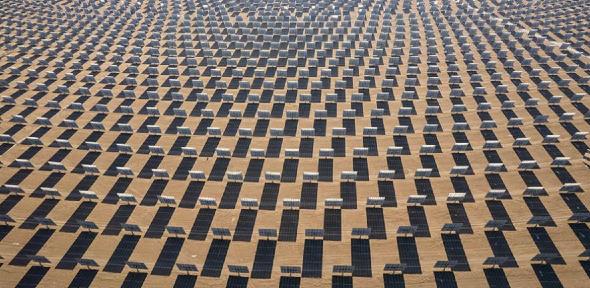
Analysis of energy RD&D investment in major economies also found that commitments at COP21 yielded some positives. Ultimately, however, trends over this century are not consistent with the ‘cleantech’ funding levels needed to meet climate goals, say researchers.
The first major study of driving forces behind government funding of energy RD&D – and the public institutions generating it – over the 21st century shows that competition created by China’s rise as a technology superpower led to significant increases in clean energy investment. The new study, led by University of Cambridge and University of California, Berkeley also finds that cooperation commitments at a UN climate conference were not just empty words, and did boost 'cleantech' innovation, albeit a long way off levels required to hit net zero or prevent two-degree warming.
The research covers eight major economies – Germany, France, US, UK, Korea, India, China and Japan – in the years between 2000 and 2018, and finds that total energy funding among seven of these (excluding India) grew from $10.9 billion to $20.1 billion, an 84% increase. The share of RD&D (research, development and demonstration) funding for clean technologies – from solar and wind to efficient energy storage – across these seven economies went from 46% to 63% during the first 18 years of this century. However, it came at the expense of nuclear energy investment, which fell from 42% to 24%, while fossil fuel funding remained 'sticky' and relatively unchanged – propped up by huge increases in fossil fuel RD&D spending from China (over $1.5 billion from 2001 to 2018).
"Competition is only half the battle, we also need global cooperation." Professor Laura Diaz Anadon, Department of Land Economy
"Levels of investment in clean energy have yet to come close to achieving meaningful global decarbonisation. Annual government funding for energy RD&D needed to have at least doubled between 2010 and 2020 to better enable future emissions cuts in line with the two-degree Celsius goal." Professor Laura Diaz Anadon, Department of Land Economy
Prof Jonas Meckling, study first author from the University of California, Berkeley, said: “Our research reveals the drivers of clean energy investment that had most impact in the 21st century. A mix of cooperation and competition between nations, and a strategic shift towards commercialisation, led to advances that policymakers must build upon.”
Many consider high oil prices a key incentive for government spending on energy innovation as alternatives are sought, such as in the 1970s. Yet the study shows clean energy RD&D continued to grow despite declining oil costs after 2008, leading researchers to assess other possible 'drivers' of cleantech investment this century.
University of Cambridge full article.
L, Anadon et al. 'Energy innovation funding and institutions in major economies.' Nature (2022)
Imagae credit: Darmau Lee

